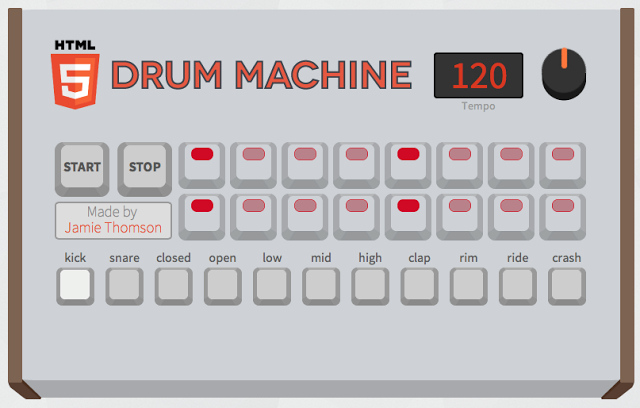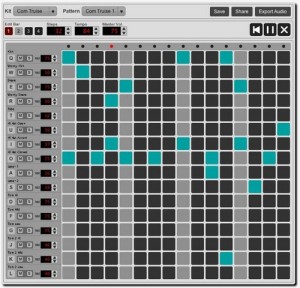HTML5 emulation of the classic Roland TR-909
In celebration of the new(ish) html audio element, Jamie made a loose-emulation of everyone’s favorite drum machine: the Roland tr-909. As the drum machine runs using html5 audio, it will, unfortunately, not work on older browsers. For best results, use Chrome and be sure to click the like buttons!
Try it out here: http://html5drummachine.com
Via Matrix
Drums in the cloud – browser based machine
Patternsketch is an HTML5 and Javascript audio sequencer and drum machine.
Patternsketch is an HTML5 and Javascript audio sequencer and drum machine. With it, you can create audio patterns, play them back, adjust playback tempo, volume, and change the audio kit. You can also save, export, and collaborate with your friends.
Patternsketch is an excercise in imagining what browser based music tools could be, and an exploration in the possibilities of new web technologies. It was built with Javascript (no frameworks) and HTML5 (no flash).
The goal of this project was to create a tool that musicians and casual music fans could use to create music patterns and collaborate on rhythmic ideas with friends. We recognize the performance is currently unacceptable for serious use, but look forward to updates in browser technology to make tools like this a viable option for music lovers.
Exciting new HTML 5 Chip Tracker appeared
The recent builds of firefox have included support for realtime synthesis through javascript, and I though I would get in on the fun and build a toy with them. I of course went overboard, and decided to make something that you could actually use to write music with, and implemented a tracker. To note, this is a prototype, and rather than discarding it without showing it to world, I have posted it here for people to play with, and potentially dissect.
The tracker currently allows for 8 channels of monophonic patterns, and each channel controls a synth that has either sine or noise waves, with a simple AD volume envelope.
The worlds worst help file follows:
- arrow keys navigate
- enter goes down one screen, escape back up one screen
- the bottom two rows of keys are used for entering notes, like a piano keyboard
- places that seem to take numbers, try typing numbers into them, it should work
- not everything that is on screen is actually implemented
- spacebar stops and starts the song
- / goes down one octave, ’ goes up one octave




